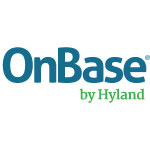This blog post is an excerpt from GovLoop’s market trends report “Leveraging Content Services to Drive Digital Transformation in Government.” Download the full report here.
Digital transformation is essential to improving government – whether it’s modernizing technologies, enhancing customer service or increasing employee productivity. But agencies across federal, state and local levels grapple with multi-year IT consolidation projects, overwhelming volumes of content and data to manage and infrastructure silos – making digital transformation all the more difficult to achieve.
One effective way private and public-sector entities alike have been navigating transformation is through an enterprise approach to content services. The right content services platform can integrate content, data and information silos, speed up manual processes through automation and drastically improve the user experience for both government employees and constituents.
GovLoop partnered with Hyland, an enterprise content services solution provider, to provide a better sense of how government across all levels can drive digital transformation through content services.
The Challenge: Modernizing Legacy IT
With increased pressure for federal, state and local agencies to modernize their IT infrastructure, it can be next to impossible to know where to begin. Too often, agencies are forced to address a number of priorities within their limited budgets while staff members try to perform their work with overwhelming amounts of information scattered among disparate IT systems.
“There are politicians telling them what they have to do, budgetary concerns, security threats and agency solutions that are in desperate need of modernization,” Jones said. “Those are all competing priorities leaving agencies asking, ‘Do we try to improve existing systems, put more money toward IT modernization, or do we focus on cybersecurity?’”
On top of these disparate but equally important challenges and priorities is the struggle to manage and store huge amounts of content and data to improve citizen-to-government transactions and decision-making. While content and data are needed to improve government processes, policy and citizen services, agencies may still buy solutions for separate issues, creating more information silos that can cause serious delays in decision-making and executing important initiatives.
“When you don’t have an enterprise vision of things working together, it allows government to store the data, but it doesn’t provide employees with the tools to use it meaningfully,” Jones said.
Take any typical transaction with government, for example. A citizen has to fill out some type of form, whether it’s for filing taxes or getting a new Social Security card. The citizen must provide additional documentation with the forms to prove identity or eligibility. The receiver on the government side must then act on the forms and documents, review them, have them verified and run them through systematic processes on the agency’s end. The result is communicated back to the citizen, and the information is stored in one of many solutions.
The problem with this process is that often, an agency must start all over again to deliver additional services to this citizen, even if the same citizen comes back to the same agency. With the prior transaction being stored in one system and the citizen’s information stored in different systems or in paper, there is no way to build on prior work or information to avoid redundant document submissions or verification tasks. Operating in a paper-based world with disconnected systems has led to processes that repeat steps and collect the same information multiple times. This is frustrating for citizens, time-consuming for staff and, when multiplied across a large government organization, leads to huge amounts of time on tasks that could be used elsewhere.
That’s why government employees need an enterprise approach to their content management to seamlessly deliver services to meet the needs and expectations of citizens.
The Solution: A Content Services Platform
Instead, agencies need an enterprise vision for their day-to-day transactions where they can give data meaning, put it into context and be able to access all the information that governs a transaction. This is where a content services platform comes into play.
Take the example of an agency that runs hundreds of different programs to support citizens in financial distress. A citizen who applies for food stamps provides an application and supporting documentation. Instead of the information being kept in separate silos, the citizen’s information is shared securely in an enterprise content services system that takes content from many tools and brings it together in a view that is impactful for a particular staff person’s role in that process. With a content services platform and approach, the person in need can be considered for many programs – saving them time and stress. Systemically, a single eligibility process that verifies that person for several services can be accomplished through the same transaction.
“The applicant immediately gets considered for any other types of services that could support them based on what they submit about themselves,” Jones said.
Today, many agencies rely on manual procedures, with most processes similar to the above scenarios beginning and ending with paper. Securing the content that had been paper-based and digitizing that content ends the cost and time of paper filing and archiving. Thus, it also saves money and improves efficiency. Content services allow for agencies to eliminate paper processes and information silos and also ensure that staff have the relevant information to verify eligibility and compliance with program rules. And, crucially, digitization means automation.
With automation and content services, agencies:
- Speed processes and complete tasks without redundant staff labor
- Prioritize important work through workflow processes that understand compliance requirements – such as supporting documentation for eligibility or certain deadlines – to help turn piles of work into a prioritized set of tasks
- Support staff with automated reminders for regulatory deadlines while providing more comprehensive views of work and transparency
“The promise of content services is having the connection between solutions, regardless of age, and having the right platform that can play well with solutions from different vendors and ultimately help employees do their jobs better,” Jones said.





Leave a Reply
You must be logged in to post a comment.